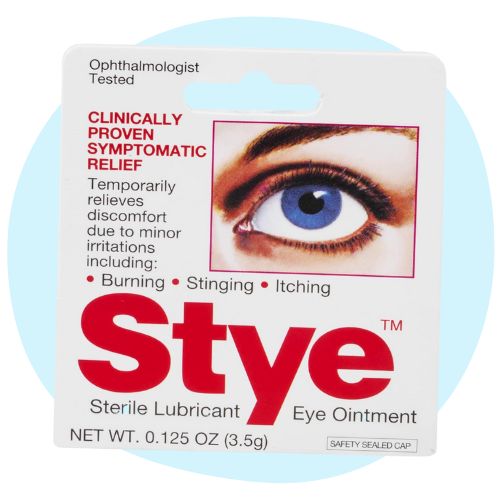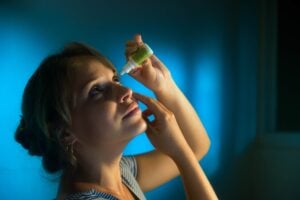What Are Antibiotic (Antibacterial) Eye Drops?
Fungi, viruses, and bacteria all cause eye infections. Infections can be very contagious.
Antibiotic eye drops treat bacterial eye infections. They work by killing the bacteria causing the infection.
Antibiotic eye drops need to be prescribed by a doctor. They contain medicine that regular eye drops (artificial tears) don’t have.
Common Eye Infections
The most common eye infection is pink eye, also called conjunctivitis. It’s essential to seek medical attention for conjunctivitis because it’s very contagious.
A doctor will determine if you have bacterial conjunctivitis, viral conjunctivitis, or allergic conjunctivitis. This will determine the most appropriate treatment course.
Another common eye infection is a stye. Most styes do not require medical treatment. But some remedies can make them less uncomfortable. For example, your doctor might recommend a topical treatment or artificial tears if your eyes are dry and irritated.
Symptoms of eye infections include:
- Itching
- Swelling
- Pain or pressure
- Discharge
- Vision problems
- Eye redness
- Tearing
- Drainage
- Dryness/crustiness
Summary
Antibacterial eye drops are used to treat various kinds of eye infections. They work by killing the bacteria that cause eye infections and stopping them from spreading.
When Are They Necessary?
Antibiotic eye drops are used to treat bacterial eye infections. Other types of medication are used to treat viral, fungal, and allergic infections.
Your doctor may prescribe you antibiotic eye drops if you have:
Bacterial Conjunctivitis
Bacterial conjunctivitis is very contagious. This is why infections like pink eye spread so quickly among young children in schools and daycare.

Contact Lens Infections
It’s also important to kill bacteria causing a contact-lens infection. Sleeping in contact lenses is one of the most common causes of bacterial eye infections.
Styes
Styes cause inflammation at the edge of the eyelid. They are red and painful. Staphylococcus bacteria cause styes, which occur when bacteria build up in an oil gland near the base of an eyelash.

Chalazion
Chalazion, which are similar to styes, are cysts deep in the eyelid. Inflammation from blocked meibomian glands causes chalazion. This blockage can lead to staphylococcus bacteria entering the gland opening.

Antibiotic treatments only treat bacterial eye infections. They won’t help with viral infections or fungal infections or if you have an allergic reaction. For eye problems in these categories, you’ll need antihistamines or antiviral medications.
Summary
Antibacterial eye drops treat eye infections such as bacterial conjunctivitis, contact lens infections, styes, and chalazion. They do not work against viruses, fungi, or allergic reactions.
Which Antibacterial Eye Drops Are Best For You?
Eye health is essential, and you should take it as seriously as all other medical conditions. Do not ignore an eye infection if it lasts for more than two days.
Speak to your ophthalmologist if you believe you have a bacterial eye infection. They will prescribe antibiotic medication to treat the infection. In most cases, medication will be in the form of eye drops or ointments.
Types of Antibiotic Eye Drops
The different types of antibiotic eye drops include:
Prescription Antibacterial Eye Drops
There are different types of antibiotic eye drops, including:
- Ciprofloxacin
- Erythromycin
- Tobramycin
- Neomycin
- Bacitracin
- Polymyxin B
- Gentamicin
Each of these has different action mechanisms. Not all of them will cure all bacterial eye infections.
For example, topical antibiotics often will not cure a stye. In some cases, two or three may be combined into a single formulation to treat an infection comprehensively.
Many types of antibiotics can kill streptococcal bacteria. Staphylococcal bacteria can develop a resistance to some antibiotics. In these cases, your doctor must select a stronger antibiotic.
Sometimes a topical or oral antibiotic may be necessary to treat your bacterial eye infection. They may be prescribed in addition to or instead of an antibiotic eye drop.
Topical and oral antibiotics used to treat eye infections include:
- Doxycycline
- Trimethoprim
- Fluoroquinolones
- Azithromycin
- Cipro or Ciprofloxacin
- Neomycin, polymyxin B, and bacitracin combination
Over-The-Counter Eye Drops
Antibiotic eye drops are not available over-the-counter. A doctor must prescribe them.
Over-the-counter (OTC) medications are often used to treat symptoms of styes, chalazion, and other infections. They come in eye drop, ointment, or oral forms. They are available without a prescription.
Keep in mind, OTC medications do not cure stye or chalazion. They alleviate the discomfort and allow the problem to heal without interfering with your vision or daily life.
Ibuprofen is an OTC medication that can reduce inflammation and discomfort related to styes and chalazia.
Ibuprofen can relieve eye pain and inflammation. Ibuprofen does not cure or shorten the lifespan of a stye or a chalazion. Instead, it reduces pain and swelling. It is especially useful for treating chalazion because they tend to be more painful than styes.
In addition to ibuprofen, there are numerous OTC and home treatments for eye infections, including:
Stye Lubricant Eye Ointment

Stye Eye Ointment offers clinically proven relief for symptoms such as burning, itching, and stinging. This ophthalmologist-tested product can also be used as a lubricant to prevent further eye irritation. It provides temporary relief for burning and irritation but cannot treat the underlying infection. If your stye does not improve within a week or if symptoms worsen after several days of use, it is recommended to contact a healthcare provider.
Stye Eye Relief Eye Drops by Similasan

Similasan Stye Eye Relief drops offer temporary relief for stye symptoms such as redness, burning, and tearing. These drops contain natural active ingredients that stimulate the body’s natural defenses instead of masking symptoms. They do not contain harsh chemicals or the preservative benzalkonium chloride commonly found in mainstream eye drops. Additionally, they are free from harsh vasoconstrictors, gluten and dairy. Trusted by families and pharmacists in Switzerland for over 35 years, Similasan is a leading Swiss brand that uses natural ingredients to promote overall health and wellness. These drops can be used as often as needed.
Warm or Cold Compresses

OPTASE Eye Compress utilizes advanced HydroBead technology to provide optimal and consistent moist heat for 10 minutes, which naturally loosens the protective oils in the eyelids needed for healthy tear production. This compress can be used for both hot and cold therapy, reducing symptoms related to styes, migraines, allergies, puffiness, and contact lens irritation. The soft cotton construction conforms to your eyes for a custom fit, and is reusable and washable.
Again, these treatments do not kill bacteria and will not cure the problem. They do, however, make the problem more manageable.
They are considered homeopathic treatments that the FDA has not evaluated for effectiveness.
Side Effects of Antibiotic Eye Drops
Doctors consider antibiotic eye drops safe and effective. But like all medications, there are side effects. The most common side effects associated with antibiotic eye drops include:
- Rash
- Contact dermatitis
- Itching
- Inflammation
- Red-eye
- Momentary blurred vision
Infrequent but more severe side effects include:
- Irritation
- Blurred vision
- Pain
- Headache
- Inflammation of the iris
Rare side effects include:
- Changes in vision
- Fungal eye infection
- Eye puncture
- Ulcer of the cornea
- Cataracts
- Deterioration of the cornea
- Fluid accumulation
- Central serous chorioretinopathy
- Pressure
- Injury to the optic nerve
- Raised spots on the cornea
Summary
Over-the-counter eye drops do not kill bacteria; they merely relieve the signs and symptoms associated with an eye infection. A bacterial eye infection would need prescription antibacterial eye drops like azithromycin and clarithromycin. These are generally safe when used as prescribed. See your doctor immediately for severe side effects like blurred vision or inflammation of the iris.
In this article





